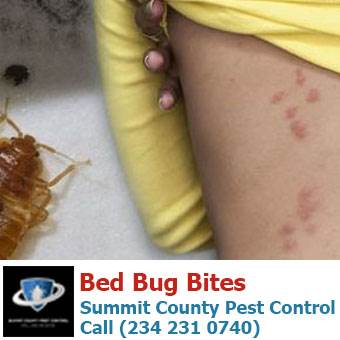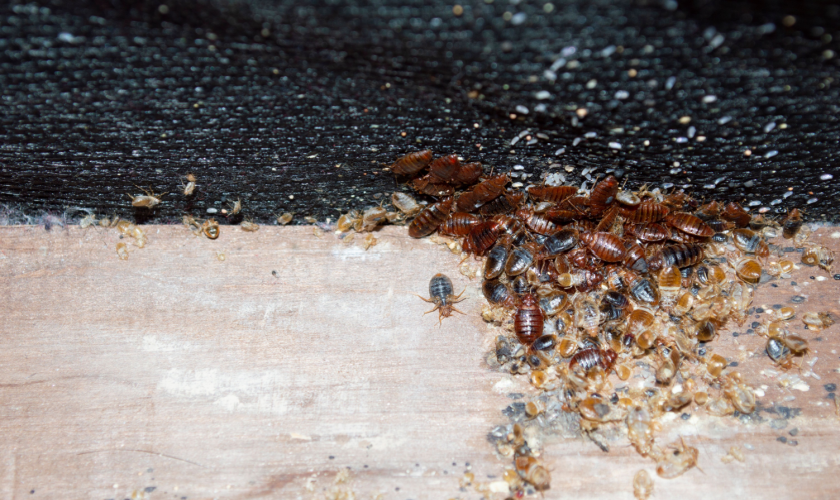Comprehensive A1 Bed Bug Extermination in Houston Area
Comprehensive A1 Bed Bug Extermination in Houston Area
Blog Article
Recognizing the Lifecycle of Bugs for Targeted Control Techniques
Recognizing the lifecycle of bugs is a fundamental facet of effective bug administration methods. By comprehending the different phases of development that bugs undertake, a more targeted and accurate strategy can be embraced to control their populations. This expertise not only loses light on the susceptabilities within the parasite lifecycle but also leads the means for implementing critical measures that can disrupt their growth and recreation cycles. Via a deeper understanding of how insects grow and advance, customized control strategies can be created to resolve particular points in their lifecycle, ultimately causing even more successful bug administration end results.
Relevance of Understanding Insect Lifecycle
Comprehending the lifecycle of pests is important for creating efficient and targeted control strategies in bug administration. By comprehending the different phases an insect undergoes from egg to grownup, insect control experts can recognize weak spots in the lifecycle where intervention can be most effective. Understanding when larvae are most active can assist figure out the optimal timing for applying larvicides. Additionally, understanding the life expectancy of a pest species can aid in predicting populace growth patterns and potential invasion risks.
Furthermore, identifying the specific ecological conditions necessary for every phase of the parasite's lifecycle can guide decisions on environment modification or exemption approaches to reduce and disrupt the lifecycle insect populations. This expertise allows pest management experts to carry out aggressive procedures instead of depending solely on reactive therapies, resulting in more lasting and long-term bug control options. Eventually, a complete understanding of insect lifecycles empowers pest control specialists to tailor their approaches successfully, minimizing environmental influences and making best use of control results.
Secret Phases in Bug Development
To successfully carry out targeted control methods in insect administration, a vital element depends on adequately determining and comprehending the vital stages in parasite development. Parasite growth commonly includes numerous key stages that are crucial for their lifecycle and management. The initial stage is the egg phase, where parasites lay eggs that later hatch out right into larvae. Larvae then proceed right into pupae, a stage where they go through metamorphosis before becoming adult bugs. Understanding these phases is essential as it helps in determining susceptible points in the lifecycle where control steps can be most reliable.

Vulnerabilities in Pest Lifecycle
Throughout the various phases of a parasite's lifecycle, unique vulnerabilities emerge that can be strategically targeted for effective control measures (A1 bed bug extermination houston). One critical vulnerability lies in the egg phase, where bugs are usually much more prone to specific pesticides or organic control agents due to their soft outer covering, making them simpler targets for intervention. Recognizing these susceptabilities in the insect lifecycle is necessary for developing precise and reliable control strategies that effectively handle parasite populaces while minimizing environmental effect.
Implementing Targeted Control Procedures

Implementing targeted control actions normally entails a multi-faceted approach. This might consist of environment alteration to make the index setting less congenial to insects, such as removing standing water for insect control or securing access points for rodents. In addition, organic control techniques can be used, where all-natural predators or virus are presented to keep insect populations in check.
Integrated Parasite Administration (IPM) strategies that integrate different control procedures in a worked with and lasting manner are often the most reliable in achieving long-term insect management goals. By executing targeted control steps based on an extensive understanding of bug lifecycles, insect populaces can be effectively regulated while lessening threats to human health and wellness and the environment.
Boosted Pest Monitoring Practices

Furthermore, the consolidation of organic control representatives, such as all-natural killers or virus of insects, can help in reducing dependence on chemical pesticides and promote an extra well balanced ecosystem. Executing YOURURL.com physical barriers and catches can also be part of enhanced parasite monitoring methods, providing safe and targeted solutions for insect control. Furthermore, making use of scents and various other semiochemicals can interfere with pest breeding patterns and communication, leading to minimized insect populations in time.
Conclusion
Finally, recognizing the lifecycle of pests is critical for effective bug administration techniques. By recognizing crucial phases in parasite development and vulnerabilities in their lifecycle, targeted control measures can be applied to decrease bug populations. Boosted insect administration techniques can aid minimize the reliance on broad-spectrum chemicals and advertise even more lasting and eco-friendly parasite control methods. This understanding plays a vital role in preserving healthy and balanced ecosystems and farming efficiency.
Recognizing the lifecycle of bugs is important for establishing efficient and targeted control approaches in parasite monitoring. By understanding the different phases a pest goes with from egg to grownup, pest control experts can determine vulnerable points in the lifecycle where intervention can be most effective. Inevitably, an extensive understanding of parasite lifecycles empowers bug control practitioners to tailor their methods effectively, taking full advantage of and decreasing environmental effects control end results.
By executing targeted control measures based on a detailed understanding of bug lifecycles, bug populaces can be effectively controlled while reducing risks to human health and the atmosphere.
By identifying essential phases in parasite growth and susceptabilities in their lifecycle, targeted control measures can be carried out to reduce parasite populations.
Report this page